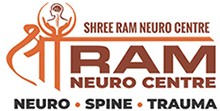A medical technique called arthroscopy identify and manage problems relating to the joints. For orthopedic surgeons, it provides a less intrusive method of investigating the complex internal mechanisms of joints, making it a vital tool. The definition of arthroscopy, its operation, its range of uses, and the advantages it provides for patients will all be covered in this article.
What is Arthroscopy?
A thin, tube-like device known as an arthroscope is used in the medical procedure known as arthroscopy. With the use of this device’s tiny camera and light source, orthopedic surgeons may see within a joint in real time.
Applications of Arthroscopy:
Diagnostic Tool: Arthroscopy is an effective diagnostic technique for a number of joint disorders, such as issues with the knee, shoulder, hip, and ankle. It enables surgeons to identify the precise origin of edema, joint discomfort, or restricted movement.
Treatment: Arthroscopy is utilized for less invasive surgical operations in addition to diagnosis. Repairing torn ligaments, removing damaged cartilage, and treating disorders like osteoarthritis are all common arthroscopic procedures.
Joint Exploration: Using arthroscopy, orthopedic surgeons can examine the joint space and find problems that other imaging methods might miss, such as loose bone fragments, inflammatory synovial tissue, and damaged cartilage.
Benefits of Arthroscopy:
One minimally invasive procedure is arthroscopy. Little incisions are made to perform the surgery. The advantages over an open procedure are as follows:
- Faster recovery.
- Minimally Invasive
- Less pain.
- Minimal blood loss and scarring.
- Reduced Hospital Stay
At the end we can conclude that Arthroscopy is a reliable and secure technique used by medical professionals to treat and assess tendon, ligament, muscle groups, and joints. These operations use tiny cuts to treat many kinds of joint and muscle issues, resulting in a quicker recovery with fewer side effects and scarring than conventional treatments.

